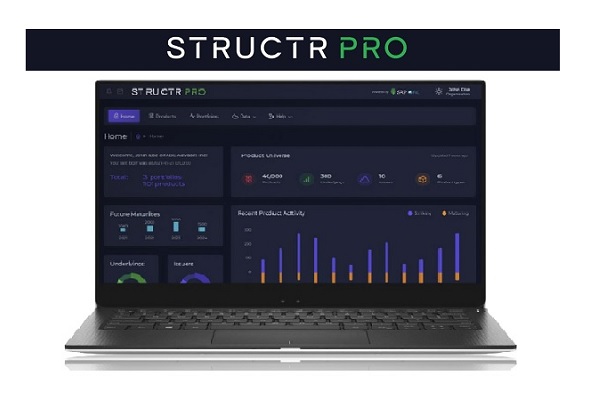In the last twelve months there have been significant increases in interest rates across all major markets. This has been caused primarily by inflation concerns causing central banks to raise rates. As a result, the world has quickly moved into a higher rate environment after over a decade of near-zero interest rates and many commentators wondering they would ever rise again to more normal longer-term levels. While the rise in interest rates is interesting from a macro-economic perspective it also fundamentally changes the investment landscape.
Interest rates rising again
Until a year ago, cautious investors were having to make a choice between accepting very low yields from any cash-based investment, gaining slightly more returns from a bond portfolio but with exposure to rate rises or accepting market volatility by utilising equities or equity-linked products.
With the rise in interest rates many income generating possibilities have appeared. The simplest of these are cash and deposit rates that have started to rise, followed by a bond market which has adjusted to higher rate expectations by shedding capital value last year. While both these asset classes offer higher rates than a year ago they are still around the 4% p.a. mark in most major currencies such as US Dollar and the Euro. Many investors are looking for levels in excess of this figure with minimal risk.
Structured products provide a wealth of income generating solutions, divided between capital protected and at-risk products. With the rise in rates the capital protected sector of the structured product market has become more attractive in recent months. Although capital protected products can offer growth (through the classic bond plus option route) the recent increase in popularity has focussed on income.
Alternatives to riskier propositions
A year ago, when interest rates were so low the structured product market was one of the few ways to chase higher yield at acceptable risk. The most common product types were the Auto-callable and Issuer callable.
The Auto-callable has been the dominant income generating choice and when rates were so low some providers also turned to the Issuer callable which provided extra yield because of the optionality for issuers. Issuer callables have significantly fallen away in popularity as higher interest rates mean simpler alternatives are available. This is a frequently observed phenomenon in investments: more complex solutions might be in vogue for a while when direct ways to achieve a basic goal are not viable but they quickly disappear when fundamentals revert to supporting the obvious approach.
While the Auto-callable remains popular it has been joined by other simpler solutions, these are the Reverse Convertible, Protected Digital and Protected Fixed Income product types.
The Reverse Convertible started out as the first Structured Product payoff to provide income at some moderate risk to capital. They have long since been replaced by Auto-calls as the main high yield structured product strategy partly because the yields that can be achieved by Auto-calls are often double the yield on the same underlying and maturity. In turn the reason for this is that Auto-calls in general only pay yield successfully in early years until calling and rarely for the full term.
The Auto-call has therefore never been a perfect yield vehicle, it is a targeted risk play. Reverse convertibles are much closer to corporate bonds for example since both generally have fixed maturity, capital return target and headline coupon rates. Since both reverse convertibles and corporate bonds are providing higher yields than the risk-free rate there must necessarily be some risk to capital, income or both. Now that rates are rising, the reverse convertible can again offer reasonably attractive fixed maturity yield targets.
Protected solutions
Another hybrid offering is the protected digital which pays a fixed amount if the index or underlying is above a target level either per annum or at maturity. The most regular construction is above a level of 90% or 100% of the strike level at a single point at maturity on a three to five year term. Unlike the reverse convertible it is easy to offer this as a capital protected product however there is uncertainty over the income and in many cases it is not even regular but just a rolled up payment at maturity.
Structured products that are bonds in disguise
In the UK several structured product distributors (for example Causeway Securities, Mariana Investments and MB Structured Investments) have started distributing products that are purely fixed income and only subject to counterparty risk. However they include a small equity kicker for example paying 0.5% at maturity if the reference index is above its start level. Issuing banks that have provided this type of product include Barclays, Royal Bank of Canada and Goldman Sachs.
This may seem an odd construction as it does little to change the economics. However the Investment bank that issues such products may have internal funding or capacity issues that means they prefer to turn a bond into a derivative back equity linked product. Both the bank trading desk and the distributor that places them may also prefer to keep the product more closely aligned with their regular offerings and revenue streams by utilising this equity component.
There have been repeat issues of such products in the last six months demonstrating that they have been successful, but such a move is undoubtedly counterintuitive. For many years the regulatory burdens that exist around any “complex” product means that there have been some attempts to move structured product payoffs out of that wrapper. Classing a fund of structured products as a UCITS or fund vehicle is the most obvious example, therefore these deposits seemingly take a step in the opposite direction.
Given trends in interest rates we can expect the structured product market to continue to stay involved and offer new solutions to the perpetual demand for fixed income.
Tags: Product typesA version of this article has also appeared on www.structuredretailproducts.com
Image courtesy of: Timo C. Dinger / unsplash.com













